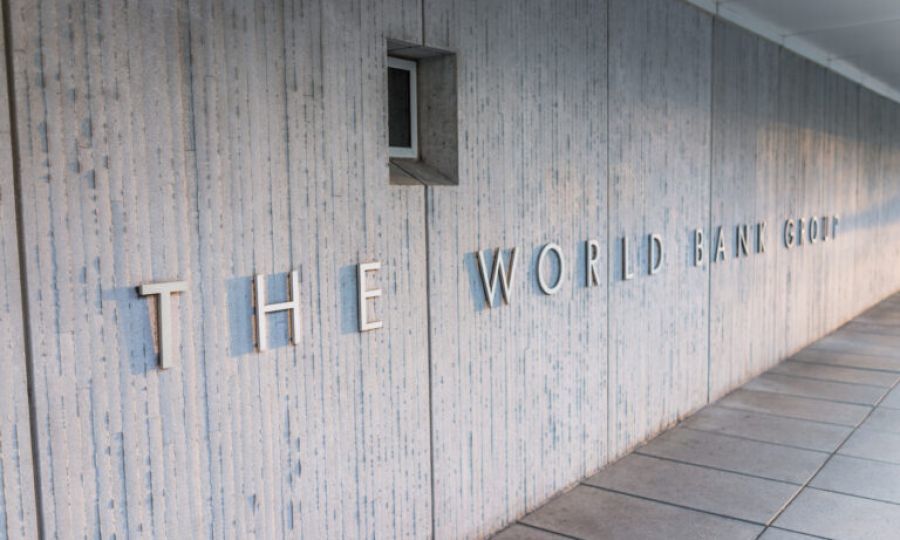World Bank Says Global Economy Is On The Brink Of Worst 5-Year Growth In 30 Years
Explore insights on how the global economy is on the brink of worst 5-year growth in 30 years, highlighting key factors and potential impacts.
Author:Hajra ShannonReviewer:Paula M. GrahamJan 11, 2024766 Shares47.8K Views

The World Bank has recently released its latest “Global Economic Prospects” report, presenting a concerning outlook for the global economy. The report forecasts that the global economy is on the brink of worst 5-year growth in 30 years. This downturn is anticipated to continue through 2024, marking the third consecutive year of slowing global growth.
The Current Economic Landscape
According to the World Bank, the global growth rate is expected to dip to 2.4% in 2024, a slight decrease from the 2.6% recorded in 2023. Despite the global economy showing resilience in the face of recessionary risks in 2023, increased geopolitical tensions are poised to present new challenges in the near term. This situation leaves most economies facing slower growth in 2024 and 2025 compared to the previous decade.
Indermit Gill, the World Bank Group’s chief economist and senior vice president, expressed his concerns, stating, “Without a major course correction, the 2020s will go down as a decade of wasted opportunity.”
This sentiment highlights the urgency for significant policy shifts to avoid a prolonged period of economic stagnation.
The Implications For Developing Economies
Developing economies are expected to be the hardest hit by this slowdown. The World Bank projects these economies to grow by just 3.9% in 2024, which is more than a percentage point below the average growth rate of the previous decade. This sluggish growth is primarily attributed to weak global trade and tight financial conditions.
“Near-term growth will remain weak, leaving many developing countries — especially the poorest — stuck in a trap: with paralyzing levels of debt and tenuous access to food for nearly one out of every three people,” Gill emphasized.
Furthermore, the report indicates that by the end of 2024, a significant portion of the population in developing countries will still be poorer than they were before the Covid-19 pandemic. This underscores the challenges these economies face in achieving key development goals, including tackling extreme poverty and climate change.
Prospects For Investment And Policy Change
To counteract these challenges, the World Bank suggests that developing economies need to implement comprehensive policies to improve fiscal and monetary frameworks. This approach should also include expanding cross-border trade and financial flows, improving the investment climate, and strengthening institutional quality.
Ayhan Kose, the World Bank’s deputy chief economist and director of the Prospects Group, points out that “Investment booms have the potential to transform developing economies and help them speed up the energy transition and achieve a wide variety of development objectives.”
The World Bank’s report also highlights the need for rapid government action to increase investment and strengthen fiscal policy frameworks. This action is crucial for turning the tide and mitigating the projected slowdown in potential growth for the rest of the decade.
Global Economic Risks And Resilience
Despite the grim forecast, the global economy has shown a surprising level of resilience in recent years, weathering various shocks such as the pandemic, Russia’s invasion of Ukraine, and global inflation. The World Bank notes that the global economy grew half a percentage point faster in 2023 than predicted in June, suggesting that the risk of a global recession has receded.
Leading this resilience in 2023 was the United States, which is likely to have registered 2.5% growth last year. However, the World Bank expects U.S. growth to slow down to 1.6% in 2024 as higher interest rates weaken borrowing and spending.
The Role Of Interest Rates And Inflation
The Federal Reserve's aggressive interest rate hikes since March 2022 have played a significant role in controlling inflation. These measures have helped bring U.S. inflation down from a four-decade high in mid-2022 to near the Fed’s 2% target level. Globally, inflation is expected to decrease from 5.3% in 2023 to 3.7% in 2024 and 3.4% in 2025, though still above pre-pandemic averages.
China's Economic Slowdown
China's economy, once a driving force for global growth, is also expected to slow down, with growth projected at 4.5% in 2024 and 4.3% in 2025. This decline is attributed to an overbuilt property market, high youth unemployment, and an aging population. The slowdown in China’s economy is likely to adversely affect developing countries that rely on the Chinese market for commodities.
Europe, Japan, And The Eurozone
The Eurozone is expected to see modest growth, with the World Bank forecasting a 0.7% growth rate in 2024. Japan’s economy is projected to grow by just 0.9%, half the rate of its 2023 expansion. These figures reflect the widespread impact of the global economic slowdown, affecting both developed and developing nations.
The World Bank’s report serves as a critical wake-up call for policymakers worldwide, emphasizing the need for urgent and effective economic strategies to navigate through these challenging times. The next few years will be crucial in determining whether the global economy can overcome these hurdles and embark on a path of sustainable growth.

Hajra Shannon
Author

Paula M. Graham
Reviewer
Latest Articles
Popular Articles